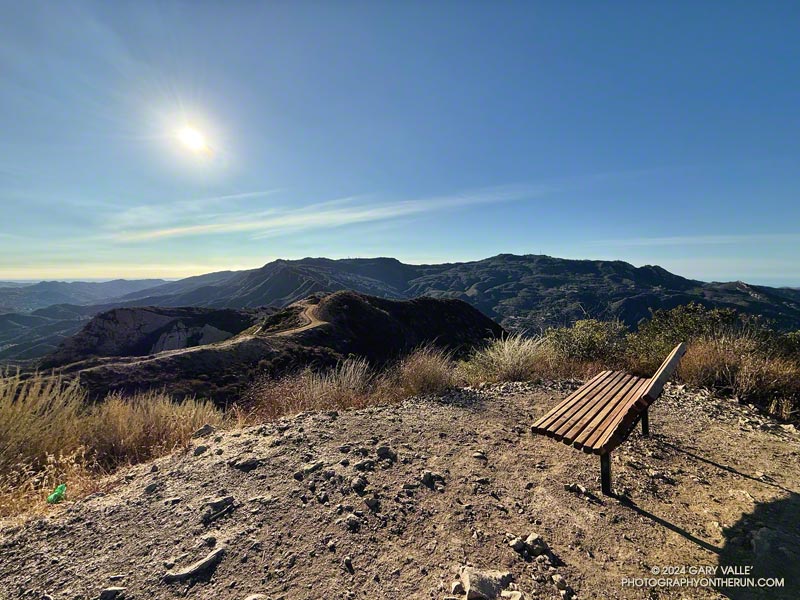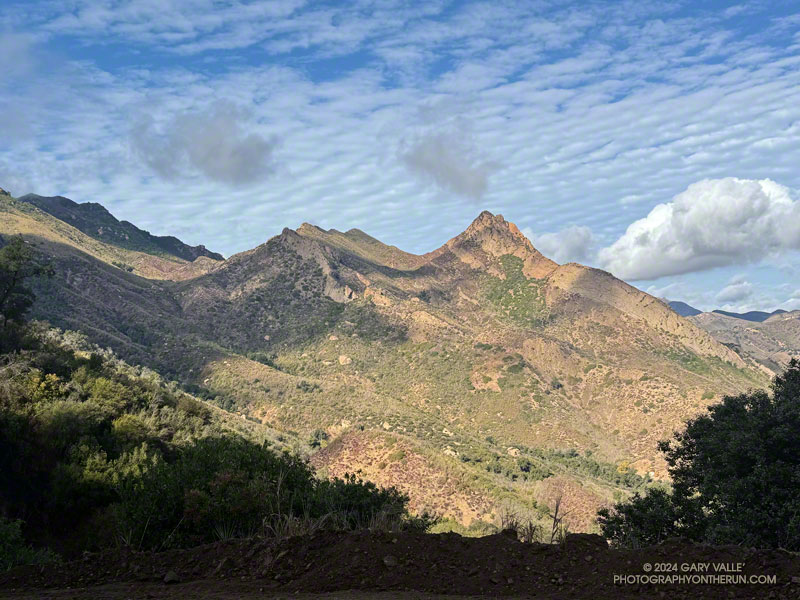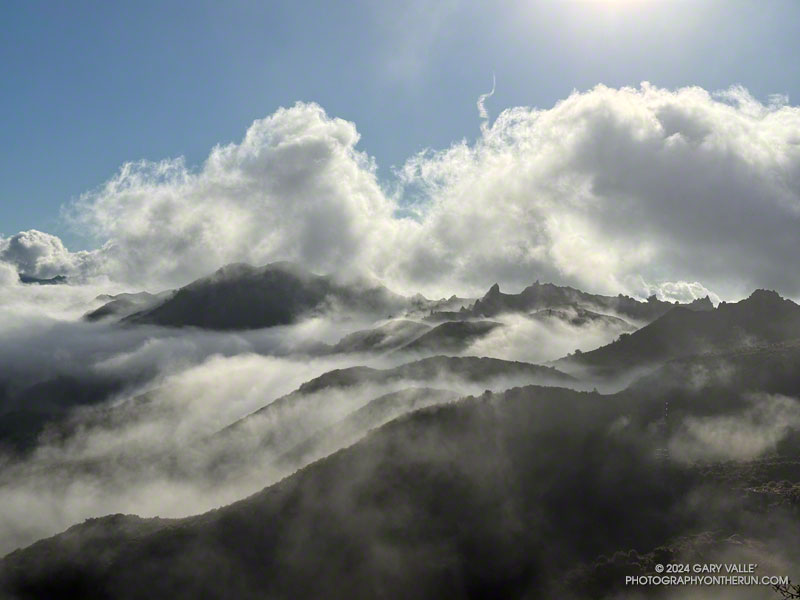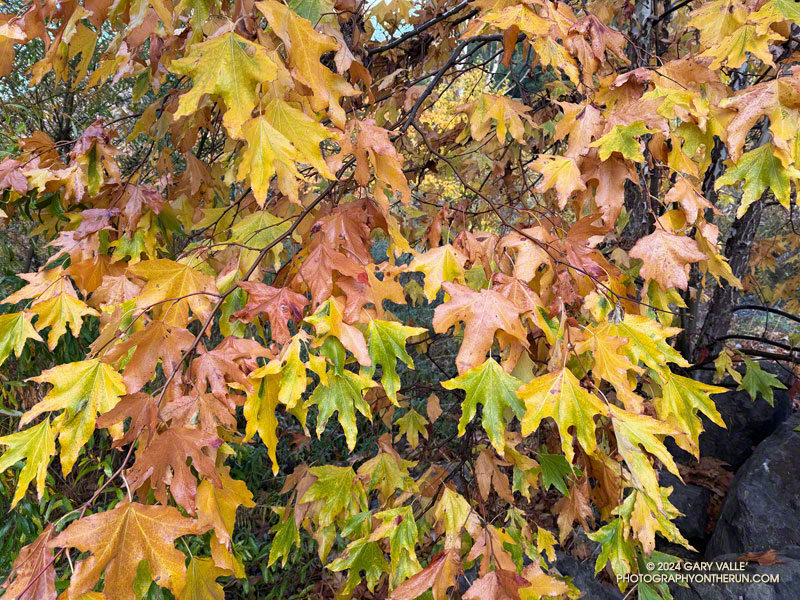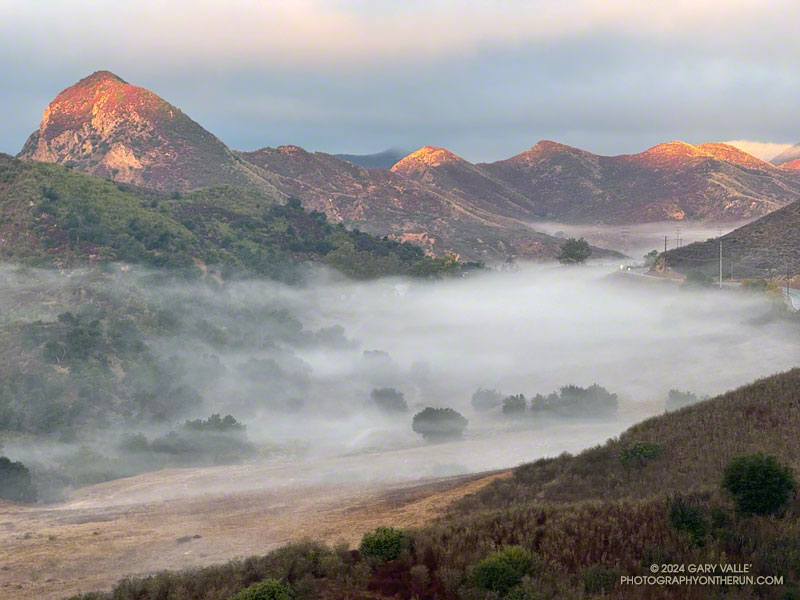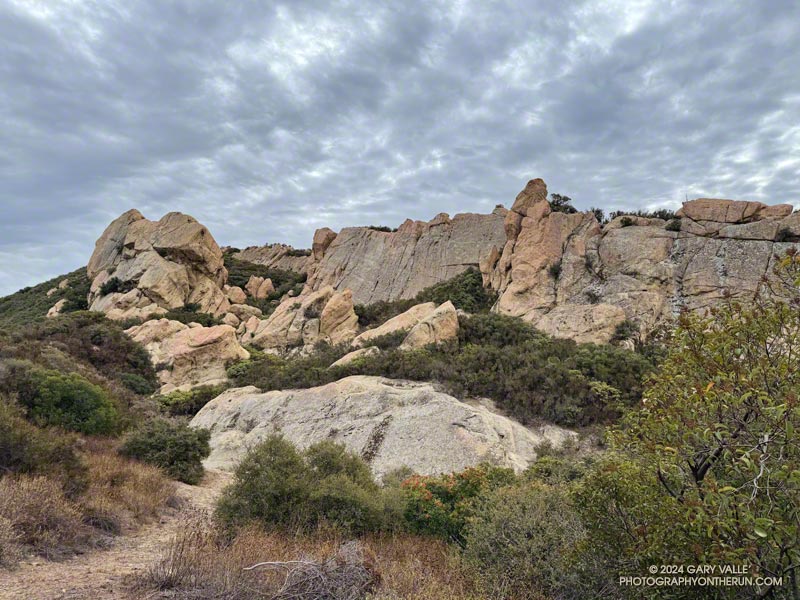
The rock formations above are near the top of Saddle Peak, in the Santa Monica Mountains, near Los Angeles. Virtually all have been climbed, and climbers will be seen on Corpse Wall (photo center) most weekends.
I took the photo while doing the Topanga Lookout Ridge Loop. I do the loop clockwise from the trailhead on Stunt Road that’s across from the start of Calabasas Peak Mtwy fire road. The bottom of Topanga Lookout Ridge is about three-quarters of a mile up the fire road.
A use trail ascends the ridge. The easiest route requires a little straightforward scrambling but bypasses the more exposed climbing on the crest of the ridge. There are four or five optional segments where the rocky crest can be followed instead of the use trail.
Here’s a high resolution, interactive, 3D-terrain view of my GPS track of the Topanga Lookout Ridge Loop, including a side trip to Saddle Peak.
Related post: Topanga Lookout Loop, Plus Saddle Peak

